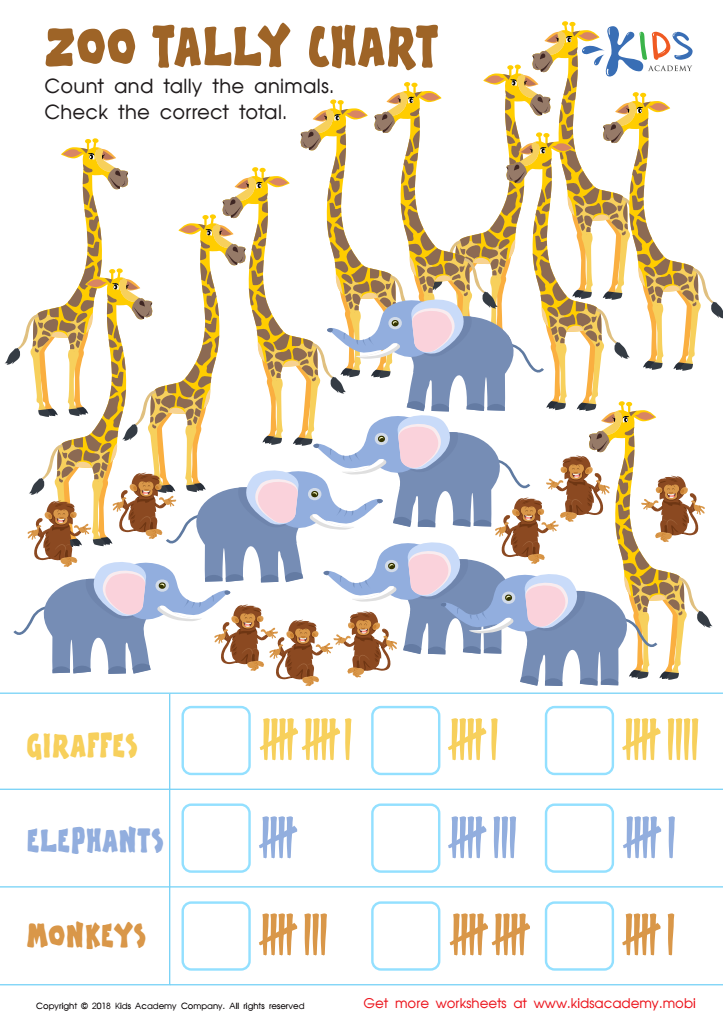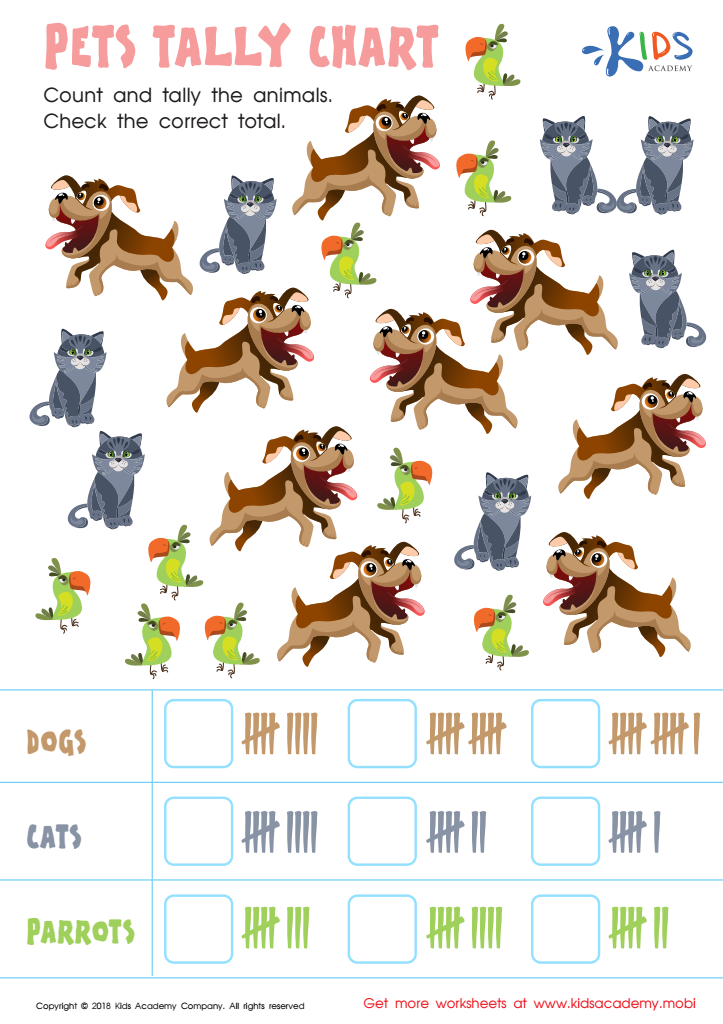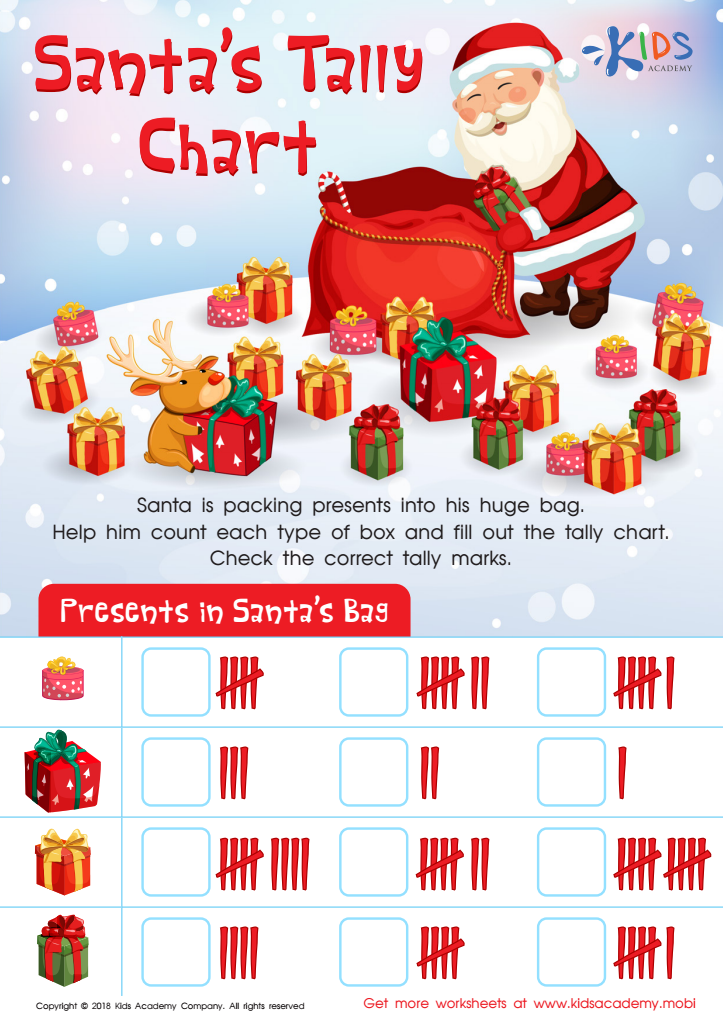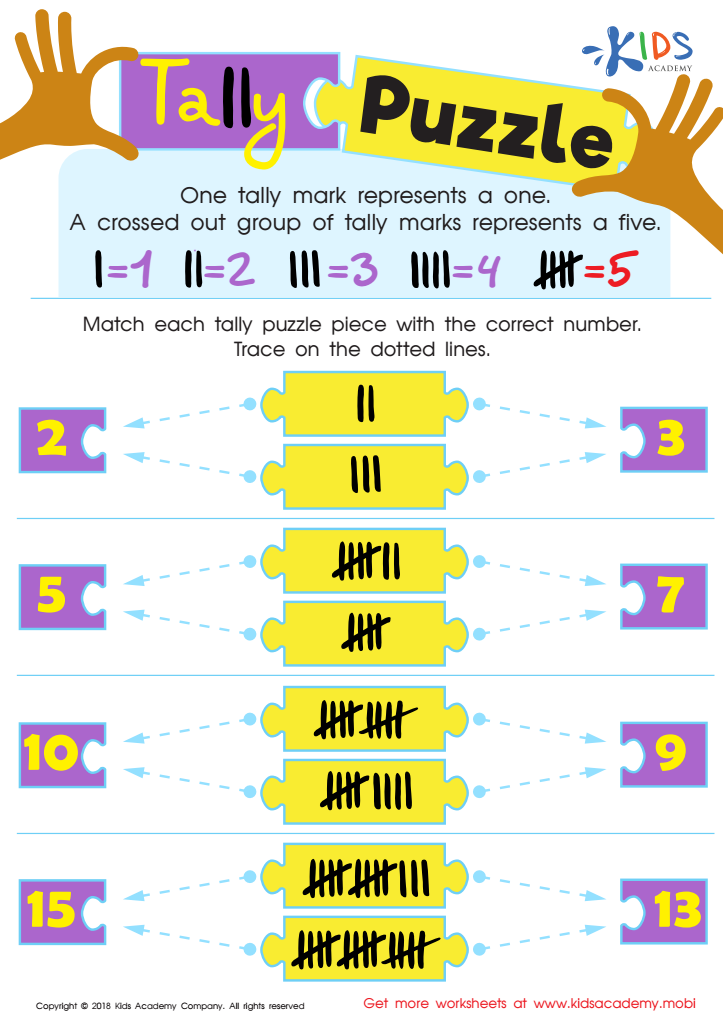Understanding tally marks Worksheets for Ages 7-8
5 filtered results
-
From - To
Explore our "Understanding Tally Marks Worksheets" for ages 7-8, designed to help young learners grasp fundamental counting and data representation skills. This engaging resource introduces students to the concept of tally marks, promoting both recognition and practical application through fun exercises. Suitable for classroom settings or home practice, these worksheets encourage children to develop critical thinking and early math abilities as they practice counting in groups, interpreting data, and creating their own tally charts. Our user-friendly format ensures that kids stay motivated while gaining essential skills that build a strong foundation for future mathematical concepts. Start your child's learning journey today!


Bugs Tally Worksheet


Zoo Tally Chart Worksheet


Pets Tally Chart Worksheet


Santa Tally Chart Worksheet


Tally Puzzle Worksheet
Understanding tally marks is crucial for children ages 7-8, as it lays a foundational stone for their mathematical and data representation skills. At this developmental stage, children learn to grasp basic concepts of counting and categorization. Tally marks offer a simple, visual method for counting groups, aiding in the procession of numerical understanding.
Parents and teachers should care about this concept, as it enhances children's ability to collect, organize, and interpret data. Using tally marks makes quantitative data accessible and understandable, bridging the gap between abstract numbers and real-life applications. Additionally, demonstrating tally marks encourages habits of systematic observation and reinforces counting skills, which can improve overall math proficiency.
Moreover, learning tally marks nurtures critical thinking and problem-solving skills. It prompts children to analyze data and draw conclusions based on their observations. In collaborative settings, this skill promotes teamwork and communication, as children can share and discuss their findings using a common notation.
Ultimately, introducing tally marks as a part of the curriculum fosters curiosity and engagement in mathematics, empowering young learners to become proficient mathematicians in the future. Thus, it is essential for parents and teachers to cultivate this early skill.
 Assign to My Students
Assign to My Students





.jpg)














